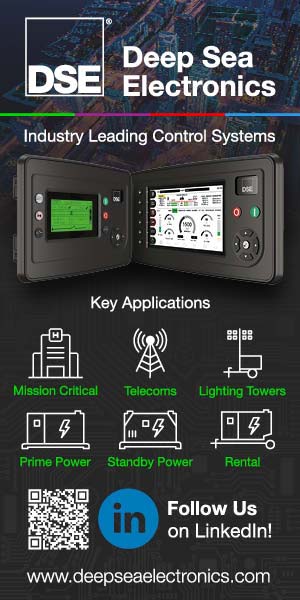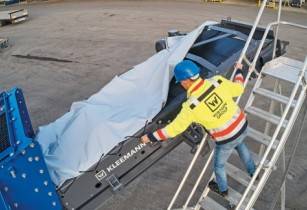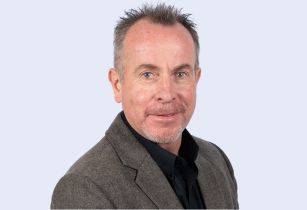Safety in engineering environment is improving through the use of 3D design and the application of visual aids is contributing to the reduction of project construction and safety risks, while assisting engineers to comply with client and international standards
According to Aurecon project manager Barry Grib, mitigating risks on unmanned substations has always been a concern in the real world, due to the reaction time it takes personnel to reach the substation at the time of an electrical or mechanical failure. Oil spills are largely due to slow oil leaks or due to human error at the time of maintenance or installation.
Current standards
Current designs cater for a bundwall area around the oil filled transformer to cater for a 110 per cent of the transformer oil volume. The standard calls for specific measure around the outer edges of the transformer to contain the oil spillage in the event of a breach of the containment tank of the equipment. For equipment above a determined volume of oil, a rapid oil draining system is recommended with a remote oil containment dam.
Shortfall of existing designs
Existing bundwalls allow for the containment of the equipment oil, but many of the older designs do not make provision for the expulsion of rainwater. Some bundwall sumps are fitted with manual water taps that need to be opened and closed manually after heavy rain.
The rapid draining system with the remote oil dam is also prone to gathering of rainwater and needs to be drained manually or with a motorised method.
Transformer failures are subjected to high levels of heat that lead to expansion of gases and the rupturing of the oil containment tank. The rise in temperature causes the oil to burn when it spills out of the transformer. The burning oil poses the risk of head damage to other equipment and all exposed cables near the bundwall area. The side effect is also uncontrolled air pollution from the smoke of the burning oil.
How can these risks be mitigated or minimised?
Several small but significant changes can be made to current designs to improve the overall design and minimise several of the issues discussed above.
Protecting the environment
Protecting the environment against any oil spill and air pollution during a fire is not only the work of the labour on site doing the installation or the routine maintenance, but it is also the responsibility of the design engineer to mitigate all possibilities of oils spills and fires contaminating the environment in the event of a failing transformer due to human actions.
Reducing fire risks
Reducing the fire risk in and around the bundwall has always proved to be challenging due to the close proximity of other equipment next to the transformer. With greenfield designs it is easy enough to cater for a larger footprint to get more clearance between equipment, but the ever increasing costs of property and space limitations on refurbishment projects has forced engineers to look at minimising the fire risk without changing the footprint with drastic measures.
Cost-effective design solution
On recent projects, Aurecon has resolved the space constraints and the fire risk with a very economical solution that can potentially save clients a lot of money and problems in the event of an oil spill.
The design calls for the bundwall to be over designed by increasing the holding volume of the bundwall. This larger bundwall is largely filled with the yardstone specified in the project design. The yardstone will effectively cover the total volume of the bundwall but also allow for oil to fill the gaps between the stones.
In the event of a transformer failure the spilling oil will be effectively cooled down by the yard stone to below the combustion temperature. The stones will effectively prevent the oil from burning uncontrolled throughout the containment area. Only the area that was exposed to the oil spill will have surface oil that will burn until dry. This will minimise the actual time and severity of the fire due to the limited amount of surface oil and the reduction in oil temperature.
The reduction in time for the fire to decrease in intensity greatly minimises the expensive firewall needed to protect other equipment in close proximity of the oil spill. The firewall does not need to withstand the extended exposure to the full impact of thousands of litres of burning oil. This reduction in the time of the fire also decreases the air pollution caused by the uncontrolled fire.
Reducing environmental impacts
All of the oil will be contained in the bundwall or the oil containment dam, depending on the design. During an oil spill the contaminated stones will already be within the bundwall area that was designed to contain the oil and the contamination. The benefit of this design has the advantage that only minimal expenses are needed to clean up the spots of oil spill after the containment/bundwall areas are emptied of spilled oil.
In the event of water already being present in the oil containment area, the design includes a safety margin to allow for five per cent to eight per cent water remaining in the bundwall after an oil spill to prevent any water/oil mix expulsion to contaminate the surrounding soil.
Overcoming site constraints on refurbishment projects
The very nature of refurbishment projects makes it very difficult to effectively design around existing equipment to provide for oils spills to be contained and at the same time minimising fire risk to adjacent equipment. During upgrading of existing transformers the need might arise to construct a firewall due to the possible size increase or oil volume increase. Limited spacing does not always provide for effective electrical or working clearances between the fire wall and the electrical components.In such cases this issue has been resolved through innovative design work and the use of stone filled bund areas.
Having the bundwall filled with yard stone allows the engineer to effectively include other equipment within the bundwall area without exposing such equipment to any serious fire risks due to the shorter duration of the fire as well as the added advantage of containing any spills from equipment such as neutral earthing compensator/resistor/transformer units.
Improving the safety of personnel
In most cases, having the bund area filled with yard stone, which effectively fills the bund area to the same level as the surrounding walking surface, greatly reduces the risk of injury for all personnel as they are able to walk on level ground. This is not only an improvement of the working area, but it also adds value to the visual aesthetics of the substation. This change in the working surface will be appreciated by all operators that have to deal with electrical problems at night time or even during rainy weather.
Enhancing the safety of equipment
Substations that were not designed to have bundwalls installed, pose the problem of no proper provision of fire protection of the cables or equipment in close proximity of the transformers. Having the bund area filled with yard stone will effectively cover all cables and sleeves in the close proximity of the transformer (Figure 4). This will greatly reduce fire damage to any cables away from the surface spillage area. Fire will be minimised effectively and the spreading of the fire around the transformer and other equipment will be greatly reduced.
Additional issues such as theft of the taps installed in the overflow/water outlet can add to the problem of oil spilling into the substation soil if removed. Replacing the tap with a removable flange will increase the need for maintenance. This problem can be resolved by a change in the design of the overflow and water expulsion system.
Examining the unseen
Having water inside the containment area always poses a risk of the fire spreading due to the nature of oil to float on top of water. This effect can be counter-acted by the application of an automated system to allow the water to be expelled during an oil spill before the oil overflows the containment area. Effective designs have been utilised on existing projects to allow the water to be expelled from the containment area by using natural gravity to push the water out of the containment area and containing the oil and effectively the contamination. This design can be adjusted for larger substations where the size of the substation transformers calls for the use of an oil dam. This involves the use of electrical water pumps for manual operation during routine maintenance inspection. The original concept however was founded for remote substations with the minimum amount of human intervention. Manual operating taps can be installed to drain rainwater away into controlled outlet points.
Reducing material build-up
Having the bundwall area filled with yard stone will have the advantage of not getting clogged up with rubbish or plastic covering the outlet pipes due to the yard stone acting as a giant filter. The limited amount of sludge and soil build up will be accessible through a manhole and can be cleared out on intervals prescribed by the project engineer. The second advantage of the system is the effective slowing down of the oil rushing into the containment area, allowing the water to be expelled with a minimum amount of oil mixing with the water inside the sump area.
Grib said that Aurecon?s innovative 3D designs have changed the standard of the water separation actions to include a buffer area into the design to cater for high volume inrush oil to effectively bypass the first section of the separator area and flow directly to a containment area without affecting the water expulsion system. This is an important function if the bund area is waterlogged after heavy rain.
Improving bundwall area design
Intelligent 3D design software has greatly improved the design platform and given us visual assistance to aid in the designing of improved bundwall areas and also improving on the drainage of the oil from the bundwall.
The future
The future of engineering design will require constant challenge and innovation. Utilising new design tools and technologies, Aurecon plans to remain at the forefront of this innovation to not only improve constructability, reduce schedule and cost, but to proactively manage risks and improve safety in operation for the life of these critical energy industry assets.




























